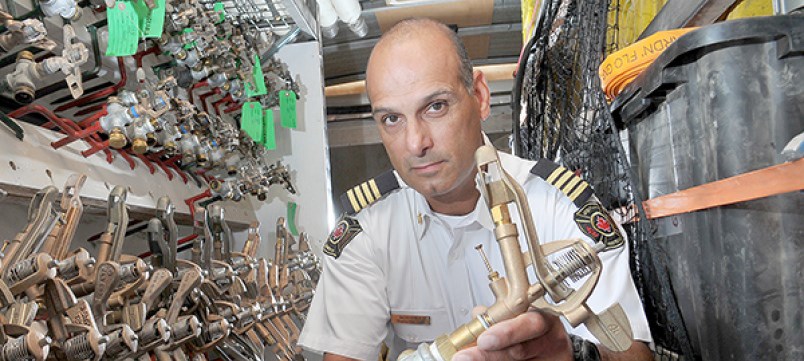Firefighters are accustomed to being ready for an emergency at a moment’s notice.
So when Port Moody Assistant Chief Gord Parker got a call from the province on the afternoon of July 7 requesting help containing blazes in the Interior, he was in his truck and out the door, getting to the scene by 9 p.m. the same day.
It was the first of what ended up being a total of 40 days spent in an area west of Kamloops, where he managed structure protection units from Ashcroft to Clinton.
The power of the wildfires was evident on day one, he told The Tri-City News while sitting in his office on the top floor of Port Moody’s Fire Hall No. 1.
“I was first assigned to the Elephant Hill fire,” he said. “It came into me as a 50-hectare fire. When we got there, it was already at the Bonaparte Indian Reserve, which is about 17 km away.”
He slept in his truck the first night but as more resources started to pour in from across the province and the country, camps and infrastructure were set up for the firefighters.
While the frontline work is generally left to the B.C. Wildfire Service, the effort relies on expertise provided by people like Parker, who has done approximately 40 deployments over the last decade to wildfires in the Interior.
With the Office of Fire Management, he is responsible for ensuring that everything from homes and ranches to cellphone towers and bridges are spared when a blaze moves through an area.
Using mobile sprinkler systems, crews access various water sources — a nearby creek or pond, even a swimming pool — in order to douse important infrastructure. When the effort is successful, as it is more often than not, said Parker, the equipment can keep structures wet enough long enough for the fire to pass through the area.
“This was probably the busiest year in terms of threatening values,” he said. “The length of time that these fires are keeping people out of their homes is unprecedented. Some people have been out of their homes for five to six weeks.”
Port Moody Fire Chief Ron Coulson said Parker’s expertise is valued across the province. He added that while it is difficult having one of his top people away from the fire hall for much of the summer, he understands that his skills are in demand.
“We are lucky that we have such talent in our midst,” Coulson said. “At the same time, he disappears from our ranks and I am always eager to get him back.”
Parker was not the only Tri-City fire official to spend time fighting wildfires this summer.
Coquitlam Fire and Rescue deployed two of its sprinkler protection units for a total of 67 days, rotating crews into the area throughout the summer.
Deputy Chief Rod Gill spent 10 days east of Quesnel, his first deployment since receiving the necessary training to assist in wildfire containment. When he arrived, the camp he resided in consisted of approximately 150 firefighters. But as departments from as far away as Ontario and New Brunswick began to show up, the numbers swelled to approximately 450.
“It is organized chaos,” Gill told The Tri-City News . “You have a couple of managers at the very top trying to organize all these resources.”
Gill saw first-hand what the sprinkler protection unit can do.
When a wildfire was approaching Fishpot Lake Resort in Nazko, equipment was deployed to protect buildings in the area. Gill said that when firefighters returned later to retrieve the devices, the entire area was scorched — except the buildings.
“One area was totally green and everything else looked like someone took a blow torch to it,” he said. “It is amazing.”
Of the 300 buildings protected by Coquitlam’s sprinkler unit, Gill said only one was lost. In that case, the fire was moving too quickly for the equipment to do its work, he said.
Both Parker and Gill said the expertise fire officials gain when battling blazes in the Interior will be valuable if a wildfire ever sweeps through the northern parts of the Tri-Cities, where housing subdivisions bump up against heavily treed areas.
With so many neighbourhoods bordering on the forest, Parker said it is important for larger Lower Mainland departments to be prepared for fires they are not usually accustomed to fighting.
“We are usually fighting fire in the box — homes, apartments, structures,” Parker said. “This is fire outside of the box. It has totally different elements is a totally different size.”
@gmckennaTC



